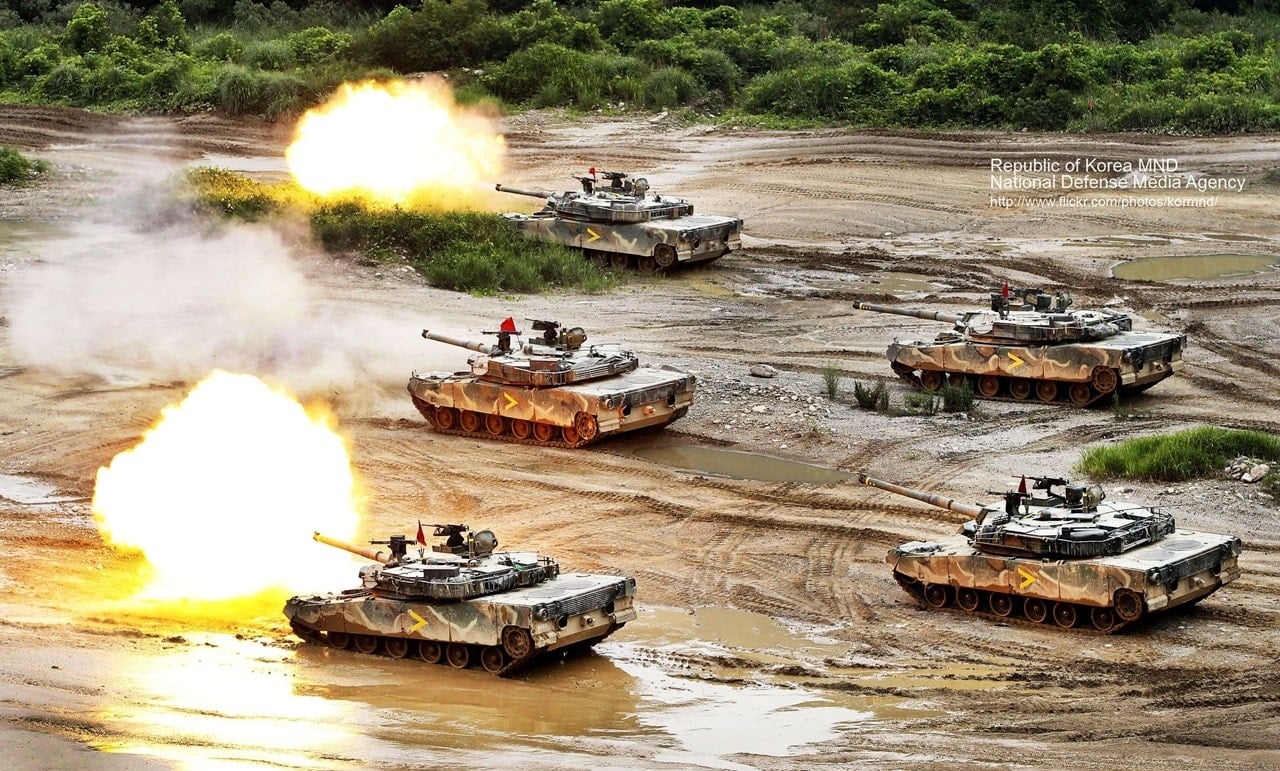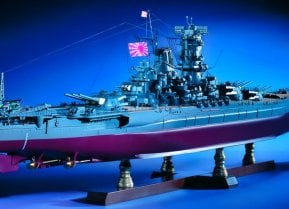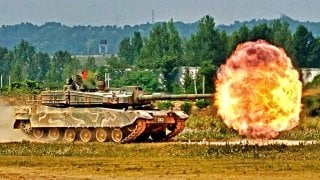K2 Black Panther: K2 PIP Upgrade Means This Monster Tank Is Scary Deadly
South Korea's K2 Black Panther, a main battle tank (MBT) celebrated for its advanced capabilities and notable as the most expensive armored vehicle at $8.5 million per unit, is set for an upgrade with the K2 PIP project.
Summary: South Korea's K2 Black Panther, a main battle tank (MBT) celebrated for its advanced capabilities and notable as the most expensive armored vehicle at $8.5 million per unit, is set for an upgrade with the K2 Product Improvement Program (PIP). This variant will introduce numerous advancements, further enhancing its combat effectiveness. Initially designed to reduce reliance on foreign military technology and improve domestic arms development, the K2 has achieved significant milestones since its introduction in 2014. With features like an automatic loader, hydropneumatic suspension, and a domestically produced 120mm/L55 smoothbore gun, the K2 stands out in global tank rankings. Poland and Egypt are among the international customers, reflecting the tank's export success.
Inside the K2 PIP: Elevating South Korea's Premier Battle Tank
While the American-made M1 Abrams, German-made Leopard and British-made Challenger are likely the most recognizable tank names today, South Korea’s K2 Black Panther should not be discounted. In fact, many analysts have argued that this main battle tank (MBT) is one of the best of its kind to enter service. Additionally, the Black Panther is noted for being the most expensive armored vehicle produced to date, with each unit costing roughly $8.5 million. Now that Seoul’s MBT has remained in service for a decade, an upgraded variant is nearing its production phase. The K2 PIP will sport a litany of enhancements when introduced, further cementing the Black Panther’s formidability.
The Black Panther was derived from South Korea’s desire to grow its manufacturing capabilities to improve its self-reliance in developing arms. Prior to the Black Panther, Seoul depended on the American-made M48 Patton. By the late 1980’s, manufacturer General Dynamics Land Systems produced the K1 88-Tank. While this new MBT was a derivative of the American-made Abrams tank, South Korea did gain experience through the development process. However, specific legal agreements surrounding the Abrams arrangement limited Seoul’s ability to export or enhance the tank model down the line.
Over the next decade, South Korean engineers again researched the possibility of producing a domestic designed tank but cost restraints hindered this project. Instead, Seoul decided to produce an upgraded K1 variant. By the end of the 1990’s, a new K1A1 variant was displayed, featuring advanced turret designs, composite armors and other capabilities. South Korean engineers were simultaneously continuing to work on a future domestic tank plan. Private companies participated in this exploratory research phase, developing new technologies and systems like the turret drive system and tank gun. Ultimately, two test vehicles were constructed. The XK2 project was selected after being declared a good combat fit by South Korea’s Defense Acquisition Program Administration in 2008.
Specs & capabilities:
The K2 was first introduced to service in 2014, designed and constructed in South Korea to safeguard production in times of war and minimize reliance on foreign allies. Like France’s Leclerc MBT, the Black Panther sports an automatic loader mounted in the turret bustle. The Seoul-made tank is also equipped with a German Rheinmetall CN08 120mm/L55 smoothbore gun that is license-produced domestically.
This power source enables the tank to reach a top speed of 43 miles per hour on the road and 31 miles per hour cross country. As detailed by Military Today, the advanced system can detect, select and load the required type and amount of ammunition simultaneously. The maximum rate of fire is 15 rounds per mount. However, it is much lower in real combat scenarios. Sixteen rounds are stored in the autoloader, while the remaining 24 are stored inside the hull.

Perhaps one of the most significant features incorporated in the Black Panther tank is its hydropneumatic suspension, which allows the tank to lower or raise its profile. Notably, this suspension can be lowered for enhanced speed, or raised for cross-country operations. The K2 can also lean forward and backward, enabling the tank to elevate its main cannon when necessary. Additionally, the gunner’s primary and commander’s panoramic sight are stabilized in two axes on the tank, including a laser rangefinder and thermal imager.
Newer K2 models produced last year were “fitted with a ‘hybrid powerpack’ consisting of the RENK transmission and an engine developed by Doosan Infracore, as the homegrown automatic transmission developed by S&T Dynamics has failed in durability tests,” according to a report released by the Defense Acquisition Program Administration.
K2 Black Panther Exports
Since the Black Panther’s introduction to service, Poland has become the largest foreign buyer of the MBT. Warsaw first announced it had begun negotiating with Hyundai Rotem for license production of the K2 back in 2020. By 2022, a framework agreement to deliver 180 Black Panthers and 820 K2PLs to Poland was penned.
This nearly $3.4 billion agreement outlined training programs, explosive reactive armor packages and logistics packages in addition to the tanks. Egypt has also revealed that it was seeking to procure the Black Panther as trade between the two nations has increased in recent years. Additionally, Norway announced that it would be putting the Black Panther up against the German-made Leopard MBT in tests to determine its future battle tank.
While the K2 Black Panther is already a robust platform, the upgraded K2 PIP variant is expected to perform even better. According to Army Recognition, some of the enhancements included in the new design are an upgraded semi-active in-arm suspension unit, the integration of a high-resolution terrain-scanning system, hard-kill anti-missile systems, non-explosive reactive armor and a new electrothermal-chemical gun that will enhance the vehicle’s firepower and potential payload.
Maya Carlin, National Security Writer with The National Interest, is an analyst with the Center for Security Policy and a former Anna Sobol Levy Fellow at IDC Herzliya in Israel. She has by-lines in many publications, including The National Interest, Jerusalem Post, and Times of Israel. You can follow her on Twitter: @MayaCarlin.


